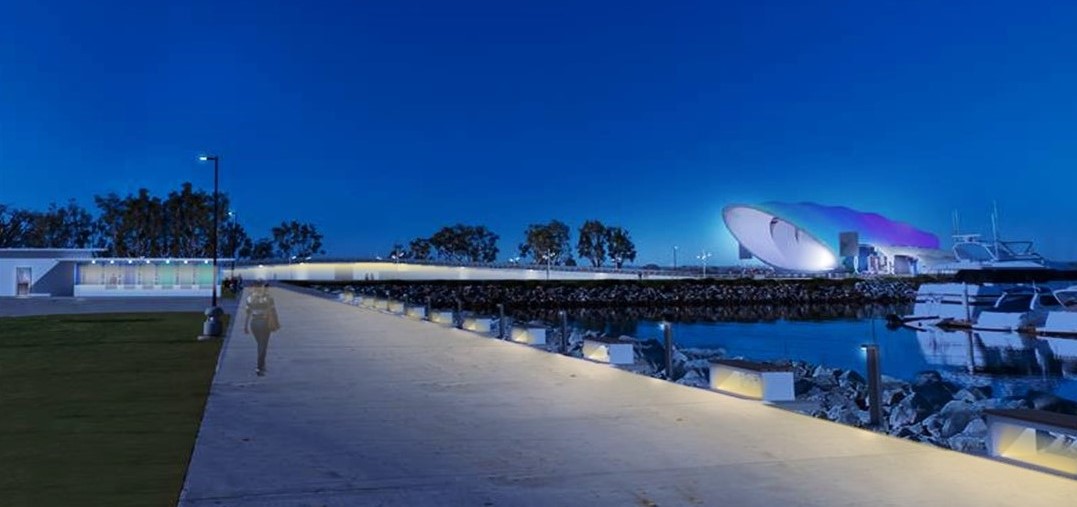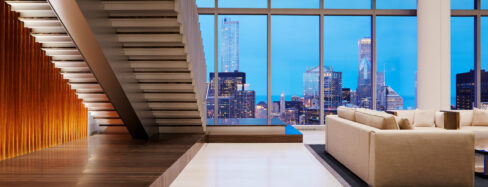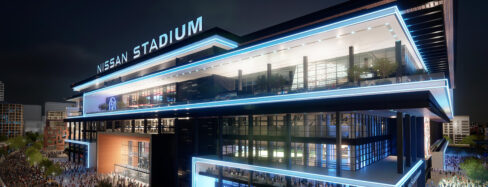I’m a geek, it’s true. A lighting geek to be exact. As proof, the other day my husband and I were having a social distanced dinner with close friends we hadn’t seen since March, and I was brimming with excitement to tell them all about my recent adventure…with a light meter.
Now this was no ordinary light meter – it was a brand-new spectrometer that gave me pages of data about the color rendering capabilities of the sources that I had been measuring. It also provided a magical gateway to the whole topic of light and color. Why, you ask, does it matter? I’m so glad you asked (we had brought the wine, so my friends didn’t have to ask…they settled in with a nice sparkling Rosé in hand)!
The adventure was a little more interesting than the pages of data might suggest. Our team has the good fortune to be working on a complex and iconic project located on a small island in the San Diego bay, the summer home of the San Diego Symphony. Its stunning location is surrounded by deep blue waters and cityscape beyond on almost every side. These two aspects of the project location make for a very challenging luminous design balancing act.
On the one hand, a desire to draw people to the Symphony, celebrating the importance of this cultural asset and its sculptural acoustic shell, suggests a bold luminous expression that enables its forms to be visible against the adjacent skyline and invites exploration. On the other hand, a desire to respect and protect the surrounding ecosystem, both in the waters below and sky above, suggests an approach that is more subdued. With careful consideration, we challenged ourselves to accomplish both. So, what does this have to do with a nifty spectrometer?
The luminous balancing act is carefully crafted with attention to the color of the light. It turns out that migrating birds are distracted by warm wavelengths of light, so during certain months of the year, lights that could scatter into avian flight paths are tuned to cooler colors. Aquatic life is impacted by cool wavelengths of light, so any sources that could scatter into the water are tuned to warmer colors (2700k to 3300k). Of course, it’s not really that simple, because environmentally it’s best if there is no light at all, yet as humans in a dense city we need light at night to navigate and tell our stories. Thus, the durations of lights on versus lights off, considered alongside the context of the surrounding cityscape, were also factored into the design.
Now, back to the meter. In the world of lighting design, LED sources have been a revolution. They come in multiple sizes and intensities, are incredibly efficient and long lasting, and they come in multiple colors of white, as well as a much broader range of colors too. But what our eyes detect has everything to do with the surfaces that intercept the light and reflect or diffuse it back to us. The way that sources of light interact with the surfaces they illuminate adds an exciting (ok, nerve wracking) element to the design. In the consideration of warm versus cool, one warm light can richly render a crisp white surface, and another dull it to a muddy mush – it depends on the characteristics of both the light source and the object it is illuminating. Mighty meter to the rescue!
Observing multiple options for the source of a downward directed wash light onto a white concrete wall, the eye says “No!” to one and “Yes!” to another. But why? Especially when both sources are essentially the same designation of “warm?” In the world of LED color temperature (the apparent color of the source to be warm versus neutral versus cool), information about the spectral characteristics help the team understand why one source renders the wall more muddy (a spike in the green spectrum), while another more white source (a balance between the green and red spectrum) seems to get it just right.
The story continues to unfold as another round of mockups are scheduled that will inevitably give the team the opportunity to get the balancing act just right. At the core of our practice, light is light, and yet, technical tools alongside a refined eye and passionately committed collaborative partners bring the symphony of light to the perfect pitch.


